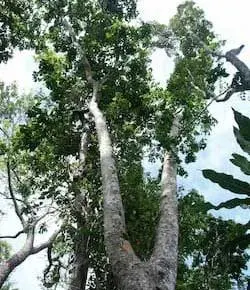4 Different Versions about How Taal Got Its Name
Among the names of Batangas’ towns and cities, perhaps the one that has fascinated me the most is Taal, and not least because there are several versions of how it got its name. This is one of those things that we will probably never get a definitive answer to because documentation was not among the strengths of our forebears. If at all they wrote things down, regrettably these were also on very perishable materials.
Augustinian records show that Taal was first established as a pueblo or settlement as early as 15721. The pueblo was in a place called Balangon and closer to Bombon (or Bonbon, Bongbong, depending on how the writer heard the name) or Taal Lake as it is known in the present day than the modern day municipality is located.
Although the Augustinian records showed the date of the pueblo’s foundation, these did not explain how the pueblo got its name in the first place. Because of this, typically versions about how the pueblo and subsequently the town got its name are based on folklore or conjecture and will likely remain unverifiable. These versions are enumerated below.
Taal is an archaic Tagalog word
A Department of Education document on Taal’s History required during the presidency of Elpidio Quirino in the fifties to help compensate for historical documents destroyed in World War II said that “taal” was a Tagalog word which meant pure or unadulterated2.
I have lived in Batangas for all intents and purposes for the entirety of my life and have never heard or known Taal to be other than the name of the town. That said, I am aware that the dialect in Batangas is a complex thing and that certain words used in one community may not be known or have different meanings in others.
I have certainly never heard it used to mean as defined by the document. If at all there was ever such a word, either it had become archaic by the time I was born in the late fifties or it was one of those words used in the Taal area that never reached Lipa, where I was born and raised.
Taal was originally “taad”
The same Department of Education document continued to say that the word “taal” was originally “taad,” which was supposedly the “upper part of the sugarcane which is used in planting.” Not surprisingly, this was followed by some cockamamie story about one Spaniard having heard the word from a farmer and could not pronounce the “d” and, therefore, said it as “taal.”
This is, of course, folkloric. That said, it is as asinine as folkloric stories can get. For one, the sound “d” is very much part of the Spanish language so that a Spaniard would not have had problems saying “taad.” For another, the story failed to explain how the sugarcane tip came to become synonymous with purity.
I will be honest and say that “taad” is not really in my own personal vocabulary. However, those who live in communities close to sugarcane plantations may be familiar with it.
Taal was named after a wild palm tree
An article in the web site “Taal Heritage Town” suggested that Taal was derived from “wild palm trees on the shores of the lake and along the banks of the Pansipit River.” The wild palm was called “tal-an,” according to the article3. Meanwhile, a 1937 article written by Percy A. Hill for the Philippine Magazine said the same thing but named the tree “taal-an” instead of “tal-an4.”
I can find no documentation over the Internet for a tree named “tal-an” or “taal-an,” but there is this palm with scientific name “borassus flabellifer” which is native to the Indian subcontinent and Southeast Asia, including the Philippines. It is commonly known as the doub palm, palmyra palm, toddy palm, wine palm and, crucially, the “tala” palm5.
Did Hill get his spelling mixed up, then, and what he was really referring to was the “tala” palm? If this was so, then the area where the tala grew would have been called, in Tagalog, as “tala-an” instead of “taal-an,” i.e. “the place where the “tala grows.” Because we love to contract words in conversation, people would have said “tal-an” as well. Of course, there is still the little matter of explaining how “tala” eventually became “taal.”
 |
| Intsia bijuga or the ipil tree. Image credit: Denis.prévôt - Own work, CC BY-SA 3.0, https://commons.wikimedia.org/w/index.php?curid=7345962. |
Taal was named after the ipil tree
In the book “The Philippine Islands,” author John Foreman listed Taal among the towns that got their names from plants or trees. He wrote, however, that Taal was named after the “ipil” tree6. You are all forgiven for thinking he was talking about this tree that my late mother used to alternatively call the “santa elena” but was more commonly known as the “ipil-ipil.”
But there is this other tree with scientific name “intsia bijuga,” more commonly known as the Borneo teak, Johnson River teak, Moluccan ironwood, Pacific teak and scrub mahogany. It is also sometimes called kwila, merbau and ipil7. Crucially, in some areas of the Philippines, the “ipil” is also known as the “taal8.”
2 “Historical Data of Taal,” submitted by the Department of Education District of Taal to the Division of Batangas, date unknown because the cover page was missing.
3 “History and culture,” online at Taal Heritage Town.
4 “Taal and Its History,” by Percy A. Hill, published in the Philippine Magazine, 1937.
5 “Borassus flabellifer,” Wikipedia.
6 “The Philippine Islands,” by John Foreman, first published 1905.
7 “Intsia bijuga,” Wikipedia.
8 “Taal,” the Leo James English-Tagalog Dictionary.


